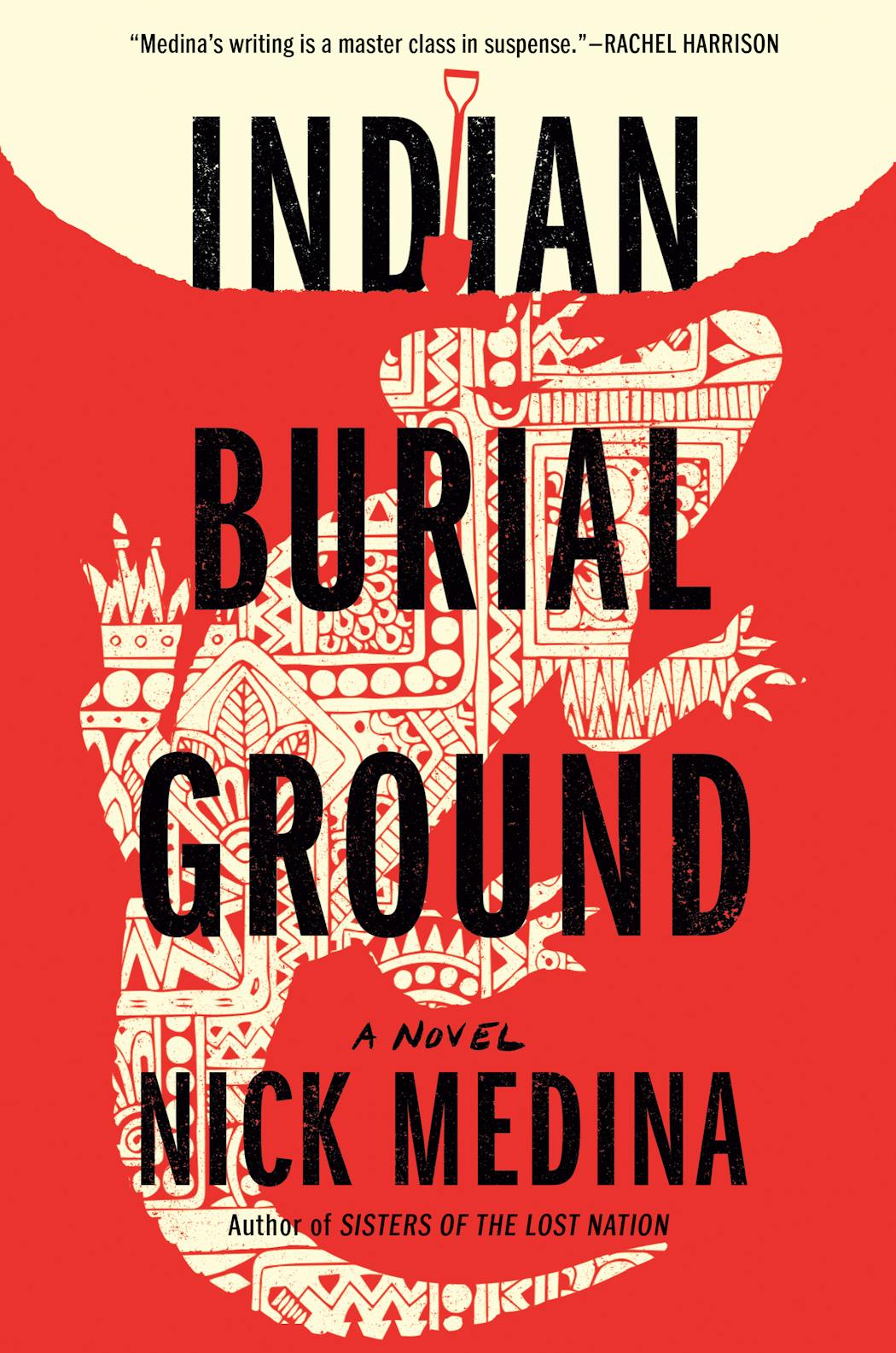A spate of 1980s horror flicks — "Pet Sematary," for one — generated scares by disturbing the sacred space of Indian burial grounds, a trope generally applied with no Indigenous input.
By calling his latest novel "Indian Burial Ground," Nick Medina, a member of the Tunica-Biloxi Tribe of Louisiana, nods to the theme but signals the intent to make it his own as he revisits the fictional Takoda reservation he introduced in his 2023 debut, "Sisters of the Lost Nation."
Both novels adeptly knit together Native mythology and the supernatural to address bigger issues: in "Sisters," the fate of missing and murdered Indigenous women; in "Indian Burial Ground," addiction and suicide. Characters migrate, too. Mother-daughter Lula and Noemi are back, as are others, but this time they are at the center of the action, which an accident sets in motion.
A woman in a Jeep hits and kills a man on foot in the road near the reservation's casino. Did he jump in front of her? She thinks maybe so and prays he's still alive as she runs for help. As she circles back, wheezing from physical exertion and favoring an injured ankle, she is startled to find a coyote standing over the man, its muzzle matted with blood.
As this last detail is revealed to Noemi and Lula by former tribal police chief Luke Fisher, who has brought the tragic news that the dead man is Noemi's boyfriend, Lula's visiting brother Louie turns and locks the door of the women's trailer. The family has been in this position before — in summer 1986, when Louie and Lula's mother was still alive but slowly drinking herself to death, Louie was a teenager, and Lula a young mother to baby Noemi.
The narrative jumps back and forth between that summer, when Louie notices animals acting strangely, a precursor of worse things to come (including vandalism at the tribal cemetery), and the present, when Noemi's disbelief in her boyfriend's possible suicide prompts her to start digging into his past.
Events circle, tensions build, as do doubts about where "Indian Burial Ground" is headed. Will it cop out and portray events as happening in a character's imagination? It seems like it will. And then it doesn't. Or does it? There's a case to be made both ways — maybe a dodge all its own. Then everything finally dovetails, past and present, in an ending I didn't see coming. At all.
It does take awhile to get there, though, and perhaps the best approach to reading "Indian Burial Ground" is hinted at in the creation myth Louie tells Noemi about the tamahka, or alligators, who block the sacred hole where the Takoda people were born. The Takoda wish to go into the wider world but the tamahka warn that they will swallow the Takoda whole if the people become callous or sneaky: The tamahka only use their teeth to shred or tear; they do not chew.
In other words, don't be tempted to dwell on the parts of Medina's intriguing novel — just take it all in as a whole.
Families can find mental health information and resources for crisis care on NAMI Minnesota's website, namimn.org. If you or someone you know is struggling with suicidal thoughts, call the 988 Suicide and Crisis Lifeline by dialing 988. You can also text HOME to 741741 to connect with a Crisis Text Line counselor.
Indian Burial Ground
By: Nick Medina.
Publisher: Berkeley, 384 pages, $28.
Singing, ceremonies and straw hats: Olympics opening ceremony in Tahiti centers Polynesian culture

Three 101-year-old friends recall fond memories in 1940s Alexandria
Celine Dion makes musical comeback at Paris Olympics with Eiffel Tower serenade




